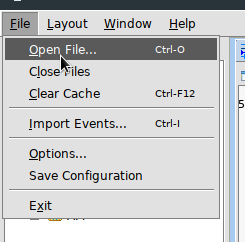Hello all,
It’s a great day in seismology—you can now view InSight data directly from Mars in your own living room! Details are in the IRIS newsletter:
http://ds.iris.edu/ds/newsletter/vol21/no1/511/mars-insight-mission-data-from-seis-now-open-to-the-public/
This means that if you have the IRIS repository in SWARM (seedlink address rtserve.iris.washington.edu, port 18000) , InSight will appear as network XB and station code ELYSE.
View XB.ELYSE in the metadata aggregator:
http://ds.iris.edu/mda/XB/ELYSE/
Happy shaking,
Ian
My apologies, it appears I’ve jumped the gun on this one. IRIS has restricted the data access to XB.ELYSE, which means public seedlink access through IRIS is not possible. However, you can still view InSight data in SWARM if you download the MiniSEED files directly and load using File > Open File…

Python/ObsPy users can download data using ObsPy’s read() function:
from obspy import read
start = "2019-02-16T14:04:21.950000Z"
end = "2019-02-17T01:22:35.863000Z"
wv = read('http://service.iris.edu/fdsnws/dataselect/1/query?net=XB&sta=ELYSE&cha=HHW&starttime=%s&endtime=%s&format=miniseed&nodata=404'
% (start.replace(':', '%3A'), end.replace(':', '%3A')))
wv.plot()
Edited 2019/05/28: made code block easier to read
1 Like
This is fantastic info, thank you for posting it. Maybe we might get to connect one day soon.
This is my 1st post and i want everyone to know that I love my Raberry shake seismgraph!
Thanks to all who made it possible for the public to purchase your devices…
3 Likes
Fantastic to get access to these data…
But there’s a bewildering number of channels. I assume the suffixes U, V, W are East, North, Vertical, but what are the first two letters? Is there a table somewhere that will allows to decipher them?
1 Like
Derek:
Buenas tardes.
UVW (“Galperin” style seismometer) is not the same as XYZ (“Classical” style seismometer). To get the data into classic E-W (X), N-S (Y) and vertical (Z) coordinates, UVM must be converted. Here is a short blog post I wrote on the subject in pre-Shake times: https://www.osop.com.pa/galperian-v-orthogonal-seismometers-part-1/
See the FDSN SEED manual for channel naming conventions (Appendix A).
From Panama, Branden
2 Likes
Thanks Branden
Another (philosophical?) question:
Time is in Earth coordinates, but shouldn’t it be Mars coordinates?
I guess this would become very confusing
1 Like
GREAT question. I would love to understand how time is kept on Mars for science applications.
Any Shakers out there that can weigh in?
Branden
@iannesbitt can we download the data from the IRIS DMC and upload it to the Raspberry Shake Community server so that Shakers can easily access it via their usual Swarm connection?
Branden
Thanks for reminding me. I have just asked Faustino about this.
1 Like
Each channel for the Mars instruments contains a “MetaData Aggregator” like this:
http://ds.iris.edu/mda/XB/ELYSE/02/MHW/
Wouldn’t it be nice to have similar webpage for each RS?
2 Likes
Excellent!
But where’s the response function?
GOOD question. That is a question for the folks at the IRIS-DMC
branden


